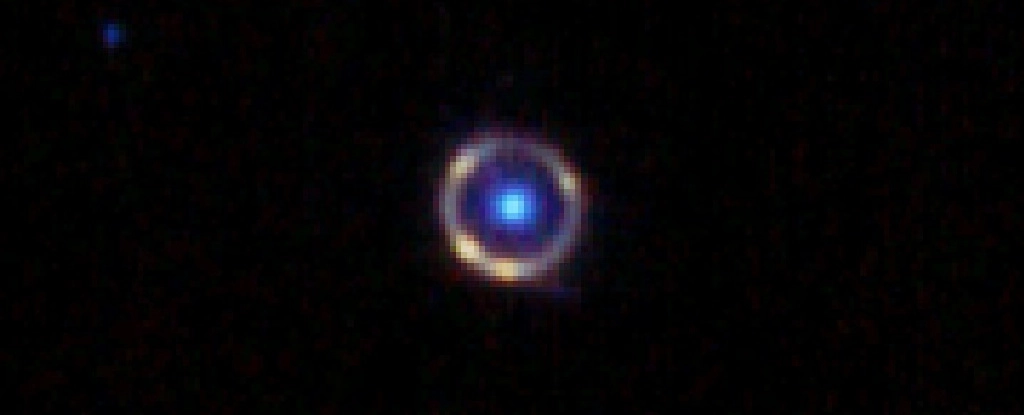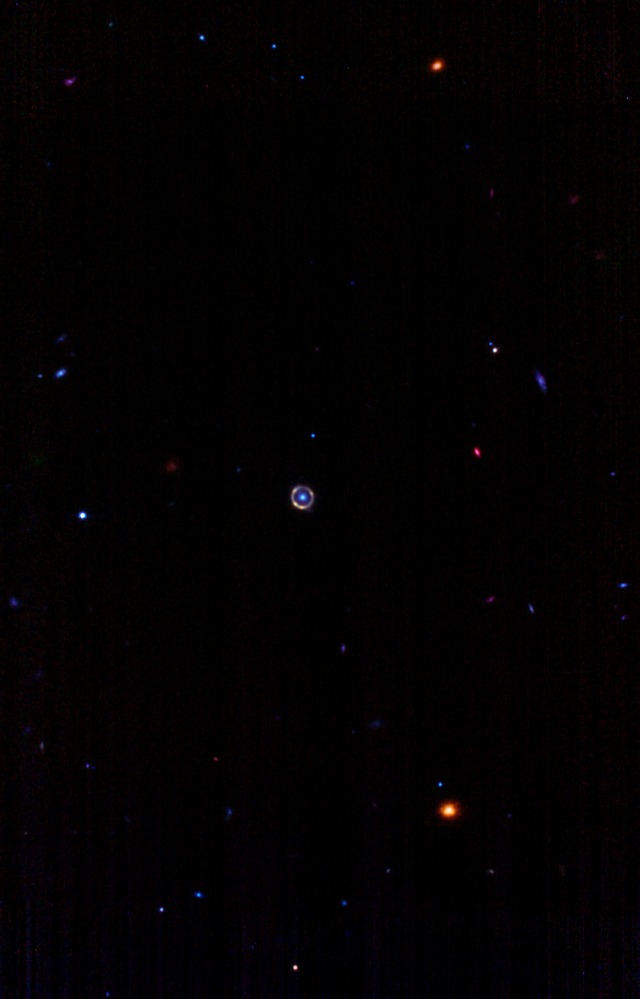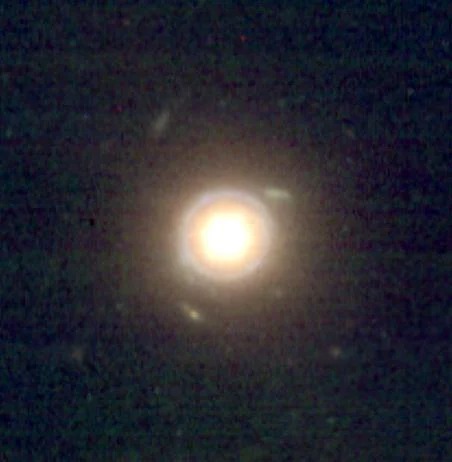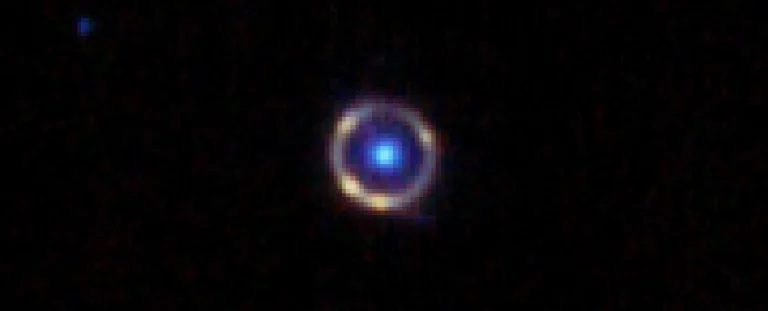An Almost Perfect Einstein Ring from 12 Billion Light-Years Away was Captured by Webb
Our feeds have been inundated with breathtakingly beautiful photographs of space since the first James Webb Space Telescope images were released in July, ranging from crazily detailed pictures of Jupiter to the farthest distant star known.
Webb has now accomplished this feat once more, this time successfully photographing an almost flawless Einstein ring located around 12 billion light-years distant. And we can’t help but stare.

Below is a colorized version of the photograph that astronomy graduate student Spaceguy44 posted on Reddit.
An Einstein ring develops when a big galaxy in front of a distant galaxy magnifies it and wraps it into a nearly perfect ring, as Spaceguy44 describes on Reddit.
The galaxy in issue is known as SPT-S J041839-4751.8, and its distance from Earth is an astounding 12 billion light-years.
Here’s a more distant view of it, also processed by Spaceguy44:

Without the Einstein ring, according to Spaceguy44, we wouldn’t be able to observe this galaxy at all.
Additionally, the existence of Einstein rings makes it feasible to investigate these galaxies, which would otherwise be very hard to observe.
Einstein anticipated this phenomenon, thus the term gravitational lensing, which describes the process.
The alignment of the far-off galaxy, the nearby magnifying galaxy, and the observer (in this example, the Webb space telescope) is required for the effect to occur.
Spaceguy44 claims that the stem and base of a wine glass produce a similar effect, so you may try it for yourself if you like. Try doing that with a book page to see the word magnified.
Even though seeing Einstein rings is unusual, it does happen occasionally. Hubble has already taken pictures of stunning Einstein rings.
Even again, this isn’t the first time Webb has managed to photograph SPT-S J041839-Einstein 4751.8’s ring.
The identical location was photographed by the Near Infrared Camera (NIRCam) of the space telescope back in August, and Spaceguy44 colorized and shared it at that time as well.
The picture below, though, wasn’t as clear.

The information in the most recent image was retrieved from the MAST site and was obtained by Webb’s Mid-Infrared Instrument (MIRI) camera.
Three different filters are used on the picture. The F1000W filter, which collects light at 10 m wavelengths, is red. The F770W filter for 7.7 m wavelengths is green. The F560W filter, which detects wavelengths of 5.6 m, is blue.
Spaceguy44 used astropy to align and colorize the photos after which GIMP was used for additional editing.
Do not forget to share your opinion with us to provide you with the best posts !





0 Comments